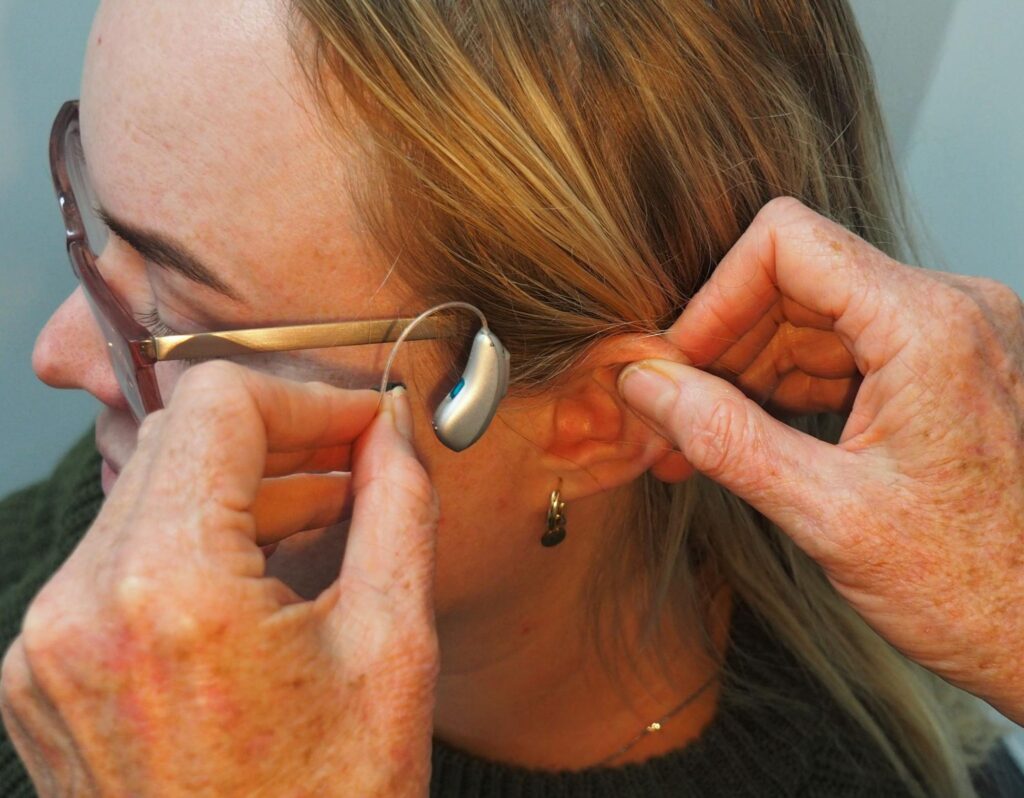St. John’s Hearing Institute is not only concerned with our patient’s access to their best hearing yet, but maintaining the best hearing practices possible. This is why proper care of your hearing aids is essential; to ensure they function effectively and have a longer lifespan. Our comprehensive guide of maintenance tips and best practices will cover various aspects of hearing aid care, including how to clean hearing aids, replacing hearing aid batteries, hearing aid storage, and troubleshooting common issues.
1. How to Clean Hearing Aids:
Regular cleaning is crucial to prevent wax buildup and maintain the performance of your hearing aids. Here are some simple yet effective steps you can take to ensure your hearing aids are serving you well:
- Clean Daily: Wipe the hearing aids with a dry cloth to remove any moisture, sweat, or debris. Pay special attention to the microphone and receiver openings.
- Use the Cleaning Brush: Gently use a brush to remove any accumulated debris from the microphone and speaker ports.
- Remove Earwax: If you notice earwax buildup, carefully remove it. Do not use sharp or pointed objects to remove earwax, as this can damage the hearing aids.
2. Battery Replacement:
If your hearing aids use disposable batteries, follow these steps for proper battery replacement:
- Identify the Correct Battery Size: Hearing aid batteries come in different sizes (e.g., 10, 312, 13, 675). Make sure you know which size your hearing aids require.
- Clean Hands: Always start with clean, dry hands to avoid transferring dirt or oil to the battery.
- Open the Battery Door: Open the battery compartment carefully. Use a small magnetized battery tool or the provided battery tab to assist in handling small batteries.
- Insert the Battery: Place the new battery flat side down, ensuring the polarity matches the markings inside the compartment.
- Close the Battery Door: Gently close the battery door until it clicks into place.
- Dispose of Old Batteries: Dispose of old batteries in accordance with local regulations, as they may contain hazardous materials.
3. Storage:
Proper storage is essential to protect your hearing aids when they’re not in use:
- Turn Off Your Hearing Aids: If your hearing aids have a power switch or a battery door that can be opened slightly to turn them off, use this feature to conserve battery life during storage.
- Use a Dry, Cool Place: Store your hearing aids in a protective case or a dehumidifier in a dry, cool place away from direct sunlight, heat, and moisture.
- Keep Them Safe: Avoid dropping or exposing your hearing aids to extreme temperatures, humidity, or dust.
4. Troubleshooting Common Issues:
If you encounter problems with your hearing aids, we recommend these potential solutions:
- No Sound: Check if the battery is inserted correctly and has charge. Ensure the volume is not set too low or muted. Clean the microphone and receiver openings, and check for wax blockages.
- Feedback or Whistling: Ensure your hearing aids are inserted correctly and the earmolds or domes fit snugly. Adjust the volume, as high settings can lead to feedback.
- Distorted Sound: Check for debris or moisture in the microphone and speaker ports. Clean them carefully. If the issue persists, contact us or schedule an appointment with our E-Clinic.
- Hearing Aid Won’t Turn On: Check the battery and replace it if needed. Ensure there are no obstructions preventing the battery door from closing properly.
Remember that hearing aids are delicate devices, and if you encounter persistent issues or are unsure about any aspect of care, don’t hesitate to reach out! At St. John’s Hearing Institute, our goal is to help our patients in any and all capacities, which is why we recommend regular visits – through our E-Clinic or local facilities – so that we may serve you to the best of our ability. By following proper care and maintenance routines, you can extend the lifespan of your hearing aids, and enjoy life to the fullest.




